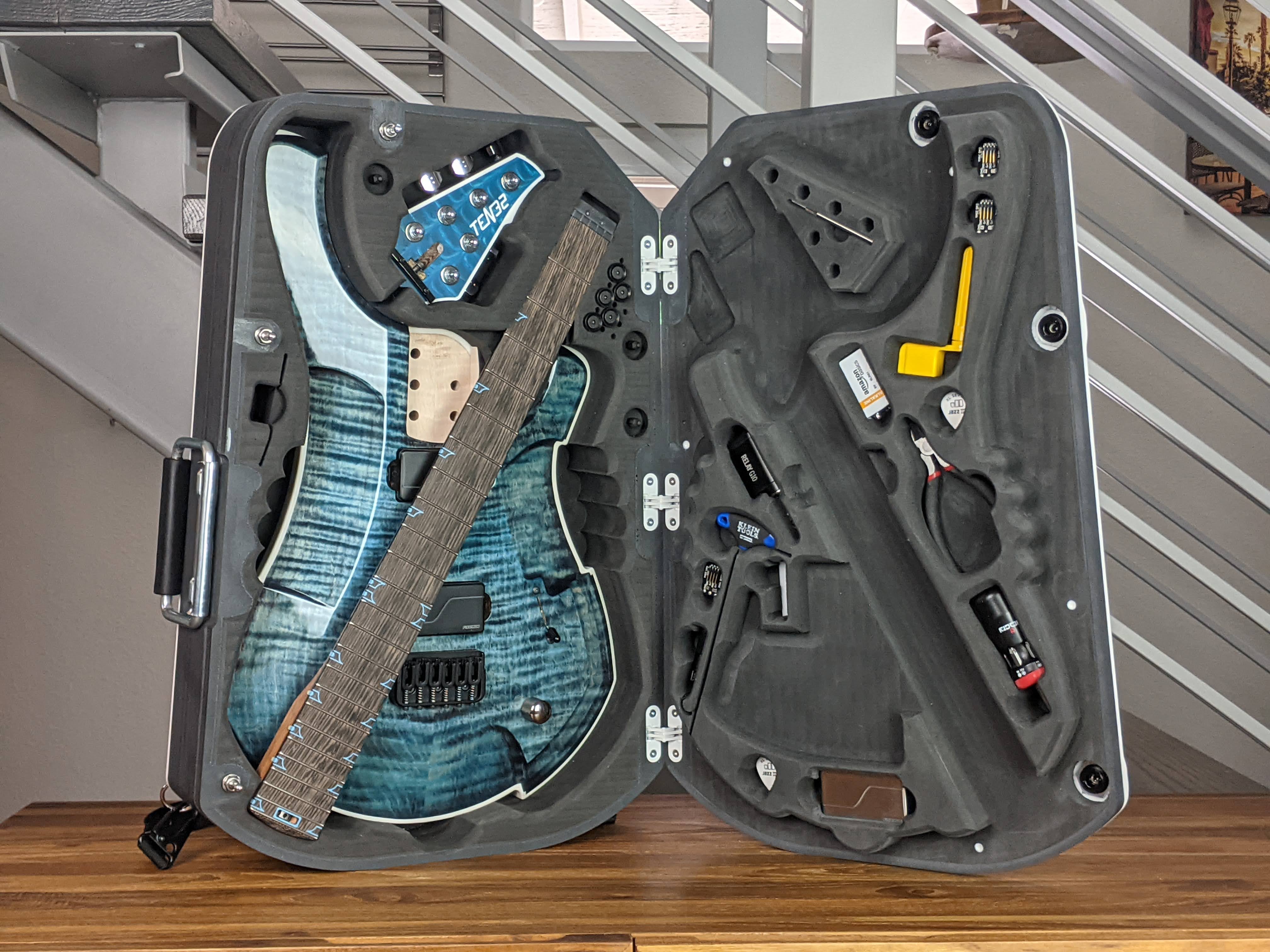TEN32 Cases
I figure the case has enough going on, it deserves it's own blog post. Photos pretty much tell the story here, but there are a few things worth covering in detail.

1. Materials
- XLPE foam - The "base" portion of the case is made of 4lb density XLPE (Cross-linked Polyethylene), which is the heaviest I can find in the 4" required thickness. The lid is 2" XLPE foam, which can be purchased up to 6lb density. Foams in these densities border on plastic - they're very firm and therefore very tough, but still have a surprisingly soft touch. You might be thinking that adds up to a 6" thick case, but the base thickness is decreased during production down to about 3.4", and half of the lid thickness slides into the body cavity of the base to securely "capture" the body between the two when the case is closed and latched. This brings the total thickness down to about 4.375".

- Epoxy Resin - the exterior of the case is 0.2" thick, and it's connected to several larger epoxy "structures" for secure hinge, latch, D-ring and briefcase handle mounting. Typically the epoxy is mixed with milled or chopped carbon fiber, which makes for an extremely tough shell. Chopped carbon fiber also makes for a handsome appearance known as "forged carbon fiber". Ferrari has the patent, I hope they don't sue me. This is the first prototype attempt:

Here's a closeup:

Here's forged carbon fiber with green pigment added:

2. Parts and Hardware
- Briefcase Handle - Each case has a heavy duty spring loaded briefcase handle on the side. It's recessed as much as possible so the spring action tucks the handle out of the way when not in use, to avoid snagging and damage.
- D-rings - Located at each corner, they allow for attachment of both the top handle and the backpack straps, both of which are easily detachable. Also recessed to avoid snagging.
- Top Handle - I wanted a flexible and lightweight handle at the top, just like a regular backpack but I still wanted strength and durability. Paracord woven in a "cobra" configuration ended up being the right choice.
- Latches - traditional draw latches proved be nearly impossible to precisely attach to the case, and I didn't like the idea of latches mounted on the sides where they might be snagged and damaged during transport. This led me to a low profile, top mounted solution. Each of these three latches is rated at 150 lbs, so it would take some serious force to open the case while the lid is latched.
- Hinges - A company by the name of SOSS makes these great hidden hinges for a variety of applications. Typically you would use three of them to mount a full size entry door. I'm using 3 anyway, even though the lid is only 14.5" x 21.6". Another decision made to maximize durability.

3. Storage Compartments
In addition to the neck, body and headstock, compartments in the lid store a whole variety of useful stuff, most of which are undercut to avoid parts falling out during transport. Here's the complete list:- 1x undercut humbucker cavity
- 2x guitar pick cavities (each stores 10-12 picks)
- 1x undercut ratchet driver cavity, with 6 allen keys stored inside
- 1x undercut 3mm ball nose wrench cavity
- 3x undercut EMG solderless pots cavities
- 1x TEN32 modular nut cavity, with room for 3 nuts
- 1x undercut Line 6/Boss wireless transmitter cavity
- 1x undercut wire snipper cavity for cutting strings
- 1x undercut 9v backup battery cavity
- 1x undercut string winder cavity
- 3x long neck allen driver cavities for use with ratchet handle
- 1x headstock plate with attached D'Addario Micro Tuner cavity
- Primary & backup bolt storage
All cases are available in nearly any base color, with nearly any inlay color, including glow in the dark. Custom inlays available as well.


1 Comment -
Randy •
this looks super cool. I really like the green one. let me know when you get that going. ROCK ON !